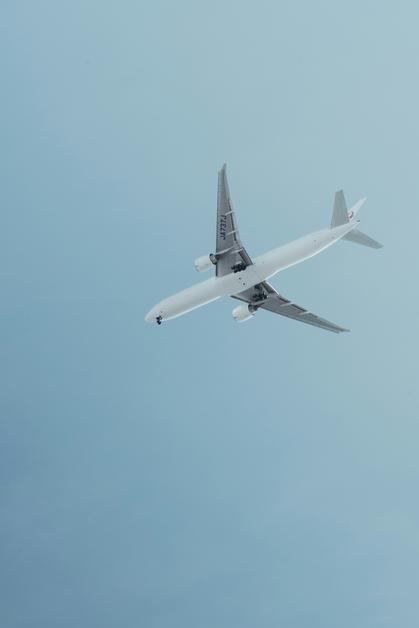Nervous about flying while pregnant? Many parents are. The mere thought often brings a flurry of questions—sometimes urgent, other times quietly lingering in the back of your mind. Is your baby safe in a pressurized cabin at 10,000 meters? Will you need a doctor’s note, and what if you suddenly need medical help mid-flight? These worries aren’t trivial; they’re deeply rooted in a desire to safeguard both yourself and your unborn child. The realities: some risks can be minimized with the right preparation, evidence-guided choices can shift your travel experience from fraught to manageable, and yes—your comfort matters every bit as much as logistics. Let’s chart a pragmatic, compassionate course through the facts and best practices surrounding flying while pregnant—from administrative paperwork and physiological adjustments, to travel timing, pre-flight rituals, and that all-important post-landing recovery.
Is Air Travel Safe During Pregnancy?
The short answer is yes—provided your obstetrician gives the green light and your pregnancy is not considered high-risk. But let’s pause and zoom in: what does “safe” mean for flying while pregnant? Clinical data and major health authorities agree that air travel poses no inherent risk to most healthy pregnancies, especially between 13 and 27 weeks (the second trimester). This window captures the sweet spot: morning sickness often calms, your belly is not yet cumbersome, and the specter of preterm labor is lower.
Still, medical nuance abounds. If your history includes previous preterm birth, placenta previa (when the placenta covers the cervix), shortened cervix identified by ultrasound, clotting disorders (think: Factor V Leiden, Antithrombin deficiency), hypertension, or gestational diabetes, flying deserves an explicit conversation with your provider. Amniotic fluid, placental oxygenation, and fetal growth are not threatened by standard cabin pressure, but complications like preeclampsia or antepartum bleeding can transform a day’s journey into a medical emergency.
Cautious? Absolutely. Proactive? Even better. Your OB can issue the necessary fitness-to-fly certificate while reviewing signs that warn against boarding—unexplained bleeding, severe anemia, or ongoing preterm contractions tip the scales against travel.
Understanding Airline Requirements and Documentation
Just as every pregnancy is different, airline policies vary, sometimes in bewildering ways. Most allow flying while pregnant up to 36 weeks for a single fetus, dipping to 32 for twins or more. After 28 weeks, expect to present a medical certificate—this document verifies your due date and affirms you’re fit to fly. Some carriers demand their own forms, stamped and signed by your maternity provider.
International flights set a higher bar: you’ll need proof of prenatal care, valid insurance for both maternity emergencies and potential birth abroad, and up-to-date medical documentation. Forgetting paperwork can mean denied boarding—a risk easily sidestepped with early planning. Safeguard your records—never pack them in checked luggage. A digital copy on your phone’s cloud storage? Sensible, too.
Travel insurance merits special attention. Policies routinely exclude pregnancy-related care unless specified. Dig into the fine print: does your coverage extend to delivery or neonatal care abroad? Does it afford medical evacuation if complications arise? These logistical checkpoints underpin a safe travel plan, and they’re as vital as your passport.
Choosing When to Fly: The Timing Question
Not all trimesters are created equal for flying while pregnant.
- The first trimester (0–12 weeks) might coincide with nausea, overwhelming fatigue, and a cocktail of hormonal upheavals—not dangerous for the fetus, yet not exactly ideal for spending hours in a narrow seat. The risk of miscarriage is not increased by air travel, but gastrointestinal turbulence may make the ordeal less pleasant.
- The second trimester (13–27 weeks) generally emerges as the optimum time. This is when energy tends to rebound, belly growth is moderate, and there’s a lower risk of sudden complications. Obstetric emergencies are statistically uncommon in this period—hence, physicians often endorse travel now.
- By the third trimester (28–36 weeks for single pregnancies), airlines routinely require documentation and restrict travel past certain dates (strictest for multiples). Mobility wanes, swelling can worsen, and the specter of labor—however unlikely—becomes the elephant on the plane.
Medical Risks and Evidence-Based Inflight Strategies
Pregnancy transforms physiology—blood volume skyrockets, veins dilate, clotting factors rise. This cocktail elevates your risk for deep vein thrombosis (DVT), particularly during long-haul flights. Prevention isn’t guesswork. Compression socks, hydration, and periodic movement—standing, leg stretches, ankle rolls—disrupt the conditions DVT requires to flourish.
Cabin air: filtered, dry, and thinner than sea-level oxygen. Not dangerous to the fetus, but dehydration lurks for everyone, especially expectant mothers already prone to swelling and fatigue. Bring a large refillable bottle, sip water steadily, and go easy on caffeine or sugary drinks. Light snacks—wholegrain crackers, raw nuts, and dried fruit—can stabilize blood sugar and help with mild nausea.
Seatbelt logic gains importance in pregnancy. Always buckle low and snug across the hips, not over your bump. An aisle seat earns high marks for facilitating movement (and restroom access).
Medical kit? Nonnegotiable. Beyond your prenatal vitamins and any prescribed meds, pack antenatal records, recent blood test results, and the contact details of your care provider. Include antiseptic wipes, a travel pillow, and hand sanitizer. Preparedness isn’t pessimism—think of it as peace of mind.
Document Security and Medical Preparedness
Never underestimate paperwork. In the world of flying while pregnant, the right documents enable swift response in emergencies. Prenatal records (including blood type, recent ultrasounds, and essential tests) should always remain in your carry-on—accessible instantly, not buried beneath clothing or snacks in the hold.
Know your destination: research nearby maternity units, especially when traveling to unfamiliar countries or rural areas. Mapping the closest labor ward, understanding emergency numbers, and translating a few basic phrases—these simple actions can make a difference when time is precious.
Coping with Anxiety, Staying Comfortable, and Communicating Needs
Worries may swirl, even if the odds are squarely in your favor. How best to manage pre-flight jitters? Breathing exercises, visualization, and open conversation with airline staff can help cement a sense of control. Some parents draw reassurance from cognitive behavioral techniques; others trust in the steady presence of flight crews, trained to intervene in case of unexpected medical events.
A relaxed mind benefits from a comfortable body. Opt for breathable, layered attire, flat shoes, and a soft scarf to counteract cold cabins. Packing small familiar comforts—a favorite snack, calming essential oil (if not medically contraindicated), noise-canceling headphones—turns a journey into an act of self-care. Tell the flight crew discreetly that you are pregnant; they’re prepared to assist and, if needed, facilitate priority boarding.
At the Airport: Security, Mobility, and Special Assistance
Security checkpoints can spark concern—are those scanners safe? The answer, backed by both health authorities and scientific consensus: yes, the millimeter-wave scanners and electromagnetic gates at airports expose neither you nor your fetus to dangerous levels of radiation. Prefer a hand search? Simply request it.
Airports are sprawling environments, sometimes overwhelming. Requesting wheelchair assistance, printing boarding passes ahead, and using family or medical priority lines tames some of that sprawl. This approach also minimizes standing or long walks—key considerations for swollen feet, aching joints, and, yes, minimizing the DVT risk.
After Landing: Monitoring Health and Knowing When to Seek Care
Arrival doesn’t signal the end of vigilance. Watch for warning signs—sudden or excessive swelling (especially in one calf), persistent or sharp leg pain, trouble breathing, vaginal bleeding, or contractions. These symptoms could signal serious complications like thrombosis or even the onset of labor. Any of them warrant prompt medical evaluation.
A slow transition—unpacking gently, hydrating, and booking a brief local check-up (especially after long-haul travel or if risk factors are present)—rounds out your plan.
The Possibility of Labor Mid-Flight: What Really Happens?
While flying while pregnant rarely results in an airborne birth, preparedness still matters. Flight attendants receive training in first aid and emergency childbirth, and it’s not unusual for medical professionals to be traveling as passengers. In a true emergency, the crew may divert the plane.
Always keep your medical certificate, prenatal records, and insurance documentation close by. Alert airline staff before boarding. The goal isn’t to foster anxiety—the overwhelming majority of flights end uneventfully, even late into pregnancy—but to affirm the value of empowerment through preparation.
Choosing Safe Destinations and Red Flags to Consider
Not all destinations offer equal peace of mind. When considering flying while pregnant, prioritize locations with robust maternity infrastructure and access to emergency obstetric care. Avoid high-altitude cities (above 2,000 meters), as lower oxygen can introduce risks to fetal well-being (fetal hypoxia, for example, or exacerbation of underlying cardiac conditions).
Steer clear of regions where Zika virus or malaria is present. Infection during pregnancy carries well-established fetal risks ranging from neurological impairment to preterm birth and, in some cases, stillbirth. If travel is unavoidable, speak directly with your care provider about preventative medication and up-to-date vaccinations—this is not the moment for guesswork or compromise.
Debunking Myths: Reassurance Through Facts
Does flying while pregnant lead to miscarriage? No—studies consistently find no link between cabin travel and miscarriage risk in uncomplicated pregnancies. Lower cabin oxygen and changes in air pressure are also harmless for babies except in highly specific maternal heart or lung diseases.
Airport scanners? Safe. Universal policy cut-offs? Not quite—airlines set their own deadlines and paperwork rules, so verify in advance.
And for postpartum parents: travel is usually possible one to two weeks after vaginal birth, or four to six weeks after cesarean, assuming both mother and baby pass a medical check.
Flying with a Newborn: Practicalities and Medical Considerations
Thinking about flying while pregnant may quickly evolve into wondering how soon after birth you can fly with your new arrival. For most, a minimum wait of 1–2 weeks (for vaginal delivery) or 4–6 weeks (for cesarean) is advised. Health assessments for both mother and infant guard against hidden complications, from infection risk to fragile healing incisions or premature birth.
Bring a certified infant car seat, plenty of medical and hygiene supplies, and clothing suitable for fluctuating cabin temperatures. Opt for short flights initially, and double-check insurance coverage for every scenario—however remote it may seem.
Key Takeaways
- Flying while pregnant is permitted and, with medical input, generally safe for most. Careful advance preparation—documents, insurance, snacks, compression socks—can mitigate many potential stressors.
- Second trimester travel is optimal for most parents due to comfort and lower risk. Consult your doctor if in doubt—every pregnancy writes its own story.
- Blood clot risk and dehydration are real; fight back with movement, water, and appropriate legwear. Choose an aisle seat, alert staff, and remember that discomfort signals deserve attention.
- Select safe destinations—maternity care should be accessible, altitude kept moderate, and regions with infectious threats avoided or approached with medical guidance.
- Postpartum travel: take time, get a check-up, and listen to your own recovery. Babies and mothers need clearance from health professionals before their first takeoff.
- Questions and anxiety are both natural and manageable—lean on available supports, travel professionals, and above all, your trusted healthcare team.
Looking for tailored advice or on-the-go health screening for your child? Download the Heloa app for free questionnaires and expert recommendations made just for families. With thoughtful planning, clear information, and encouragement from your medical team, flying while pregnant and even with a newborn becomes a journey defined not by fear, but by confidence—and even a bit of excitement for the new adventures ahead.
Questions Parents Ask
Can I travel alone on a plane while pregnant?
Absolutely, many women travel alone during pregnancy with no issue. If votre grossesse is progressing normally and your healthcare provider has approved the trip, it is entirely possible. For peace of mind, inform the airline during check-in that you are expecting, so the crew can be attentive to your needs. Don’t hesitate to ask for assistance with your luggage or for a more accessible seat if that helps you feel more comfortable. Trust your instincts and listen to your body—if you ever feel unwell, seek support from crew members promptly.
Are airport scanners safe during pregnancy?
It is perfectly understandable to worry about exposure to scanners when traveling while pregnant. Rassurez-vous, both the walk-through metal detectors and full-body scanners used at airports do not expose you or your baby to harmful levels of radiation. These devices are designed with safety in mind for all passengers, including expectant mothers. If you feel uncomfortable, you always have the option to ask for a manual security check instead.
What should I pack in my carry-on when flying pregnant?
Preparing your carry-on thoughtfully can help make your journey smoother and more comfortable. You can include your prenatal records, a refillable water bottle, compression socks, healthy snacks, and any medications you might need. A travel pillow, hand sanitizer, and a lightweight blanket or scarf can also add to your comfort. It’s always a good idea to bring copies of important medical contacts and insurance details, just in case. Above all, pack items that bring you reassurance and comfort throughout your trip.

Further reading:









